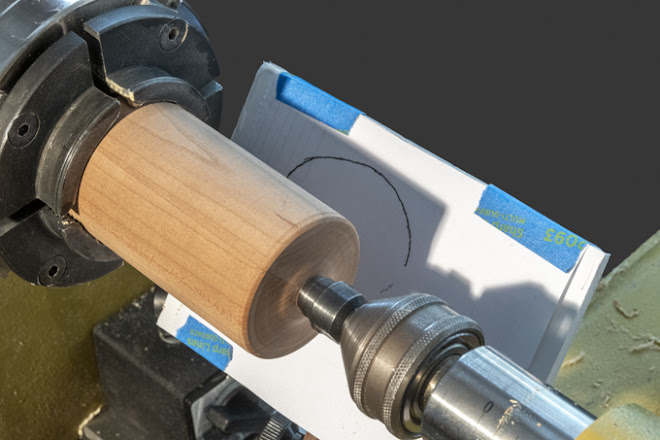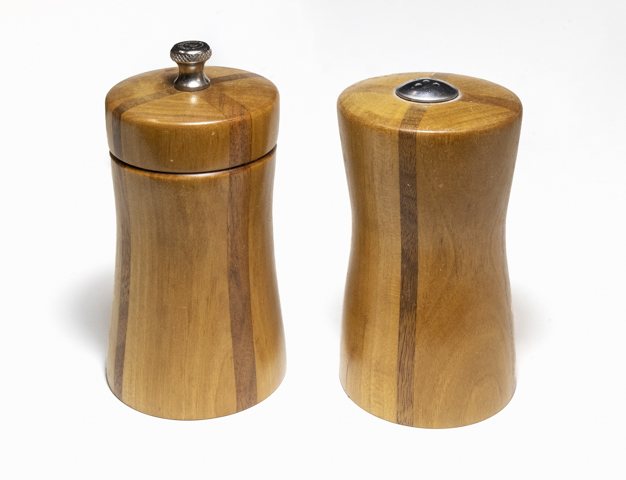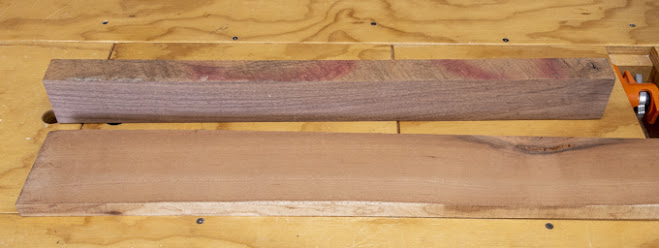In the past I have turned a variety of different sized
spheres in numerous different woods including some laminated ones. They don’t use much material and are a fun
little lathe project. For other purposes
I have also turned some elliptical pieces, mostly as handles. However, on the couple occasions that I
attempted to turn an egg shape the results looked pretty bad. Actually, they were closer to a football than an
egg or maybe what Picasso or Dali would have done. Not too long ago I saw a
demonstration on how to turn an egg using a shadow method. Since that was a technique, I had never tried I couldn’t resist giving it a try.
Like a lot of other of my projects a couple of things
need to be made before the egg could be turned.
The first is a small fixture to hold a real hard-boiled egg that will be
used as the pattern. Using an old glued
up scrap block a piece was cut to make the blank for the fixture.
First the blank is mounted between centers on the lathe
and turned round as shown in the top photo.
Next the blank is lightly mounted in the 4-jaw chuck then the point of
the live center in the tail stock is inserted in its original location on the
end of the blank. This aligns the center
line of the blank with the long axis of the lathe assuring the blank runs true
as in the bottom photo.
Not knowing for sure what size, the fixture needed to be
the first attempt in the upper left ended up too long for the wood blank that will
be used to make the egg. The second
candidate in the upper right was better but still too long. The third try gave me a compromise between
work space around the chuck when turning the egg and being able to use the blank I plan on using. At least it looks
that way.
To make a wood egg a real egg is used as a pattern. It is hard boiled to prevent a mess just in
case a there is a problem. Here it is
set in the just made fixture at the left end.
There should be enough room between the egg and the headstock for me to
do the turning. The live center at the
tailstock end has the center point in the black live center insert removed so
it does not punch a hole in the egg.
With a way worked out to hold the egg in place next is to
make a holder for a sheet of paper so the shadow of the egg can be drawn on
it. Below, the top photos show the front
and back of the finished shadow board holder.
The articulating arm is from my dial indicator set. The paper is attached to a small piece of
foam core stuck to the leftover piece of wood used to make the dowels for the
Sanding Blocks. All it required was the
end to be turned to a slight taper to fit in the articulating arm’s mounting
hole. That turning setup is shown in the
bottom photo. Bear with me for a minute
as the actual method for turning will become clear soon.
The setup for making a pattern is shown in the left photo
below. The red arrow points toward where
the egg is in the lathe. Also shown on
the right of the same photo is the light that will cast the shadow of the egg
onto the paper. The light needs to be as
small a source as possible. Here a
halogen work light with a focusing reflector is used. A regular frosted light bulb does not work
very well as it gives a too diffused light source. Better would be a single point LED fixture. Locating the light properly is important as
it needs to be set so it’s 90 degrees to the face of the shadow board. The photo on the right shows the egg set in
place and ready to go albeit with the light turned off. Below the egg you can just see the
articulating arm’s magnetic base on the lathe’s way.
In the top photo below, you can see the shadow when the halogen
light is turned on and where the shadow line has been traced with a
pencil. The bottom photo is the same
except the halogen light has been turned off.
Now I have a pattern to turn to.
Here are a couple more photos of how the pattern looks
from a straighter on view. These photos
couldn’t have been taken with the halogen light on since the camera would have
blocked the light that makes the egg’s shadow.
Next the already turned round blank gets mounted back in
the 4-jaw chuck. The top photo shows the
blank lightly clamped in the chuck and the tail stock on the right end ready to
be run in tight to the cone. This cone
will center the blank in the lathe. The
bottom photo shows the tailstock run in.
Once centered the chuck gets tightened down to securely hold the blank.
With everything in place, the halogen light is turned
on. The photo shows the shadow cast by
the blank onto the shadow board. All
that’s needed now is to turn away the blank so the shadow aligns with the
pattern and what’s left is the egg shape.
Next Up – Completing the Turning, Finishing & a Problem













































